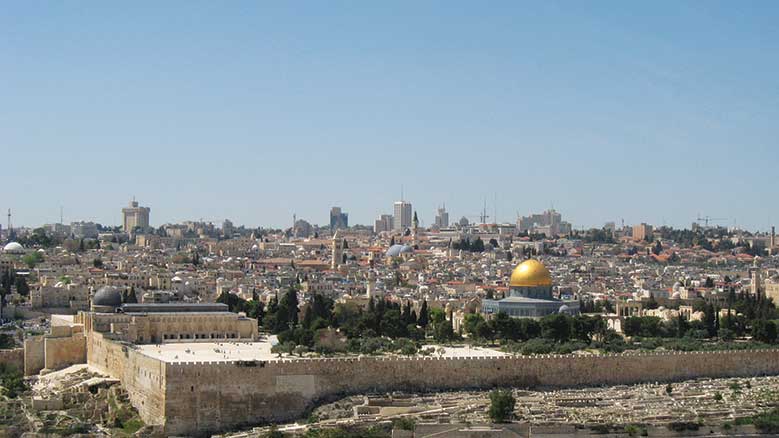
Probably you can easily imagine it: that familiar photo looking west across the Old City of Jerusalem from the Mount of Olives. The sweeping panorama takes in the golden dome of the Dome of the Rock shrine; further back, the black tops of the domes of the Church of the Holy Sepulchre; and the walls of the old Temple Mount with the Western Wall out of sight on the far side. There they all are in Old City Jerusalem: the spiritual cores of all the three great monotheistic religions, side by side by side.
Medieval science, philosophy, and medicine flourished in the Middle Ages in the Iberian Peninsula as Christian, Muslim, and Jewish writers and scholars shared their knowledge.
I’ve been privileged to go to all three. I was inside the Dome of the Rock in 1970, before it was closed to non-Muslims. My last time in the Old City, I was accompanied into the Church of the Holy Sepulchre by a Palestinian Muslim doctor who wanted to see the inside. Having already visited the Western Wall myself, I was greatly moved in hearing the story of a developmentally delayed patient of mine who was so excited to travel with her synagogue group and place a prayer from her grandmother into a crevice in the Western Wall.
Despite conflicts, the three faiths—side by side for 1,300 years—have found ways to live together with respect, even celebratory joy.
We know of other examples when Muslims, Christians, and Jews successfully lived together within communities. Spain from the early seventh century well into the fourteenth century included stretches of decades where Jews, Christians, and Muslims interacted with tolerance, revering each other’s way of life and traditions. Medieval science, philosophy, and medicine flourished in the Middle Ages in the Iberian Peninsula as Christian, Muslim, and Jewish writers and scholars shared their knowledge.
More recently, interaction between faiths is presented in Ariel Sabar’s lovely memoir, My Father’s Paradise, which tells of Kurdish Jews in a rural village in Northern Iraq. Sabar begins with descriptions of his grandparents’ life in rural Kurdish Iraq in a village where his Jewish ancestors lived in harmony with Muslim and Christian neighbors. They celebrated each other’s holidays, attended weddings and funerals of friends of other faiths, and interacted respectfully in business and professional relationships.
It is with these and other similar examples in my mind and heart that I carry on my work as a Friend in twenty-first century United States. In my role as clerk of the Philadelphia Yearly Meeting Middle East Collaborative, I work with a team of Friends to inform Friends and others in the Philadelphia region of some of the developments and complexities of current Middle East political, social, educational, and economic challenges. Together we have a shared vision of equality and a just peace between the Palestinians and Israelis in the Holy Land that may in the future be a reality. Together we share a concern for broken resolutions, continued violence, and entrenched leadership.
Friends presence in the Middle East is carried by the two monthly meetings that comprise Near East Yearly Meeting: Brummana Meeting in the hills east of Beirut, Lebanon, and Ramallah Meeting in Palestine, about ten miles north of Jerusalem.
Each of the two Near East Yearly Meetings monthly meetings is intimately connected to a school: Brummana High School in Lebanon, and Ramallah Friends School in Palestine. Political events in the region added to the First World (or Western) drive for colonization. In the last quarter of the nineteenth century in Greater Syria (ostensibly the whole region east of the Mediterranean Sea), numerous schools were started under the care of Western entities. American Friends were instrumental in the late 1860s in beginning Friends Girls School (FGS) in Ramallah. Paralleling those efforts, British Friends helped local Quakers establish Brummana Meeting and Brummana High School in 1874. Friends Boys School started in Ramallah about a generation after Friends Girls School, when in 1905, FGS graduates wanted a school for their sons. Ramallah Meetinghouse was built in 1910.
During three teaching years in the region, I was blessed to worship with Friends at both Brummana Meeting and Ramallah Meeting. In the 1969–70 school year, I taught English as a second language at International College (IC) in Beirut, Lebanon, a secondary K–12 school adjacent to the American University of Beirut. IC had a program through the ‘60s, and until the war in Lebanon in 1975, of hiring American young men as teaching fellows. I was one of five teaching fellows at IC in the 1969–1970 school year. We taught a part-time load of English, did dormitory supervision, and a bit of coaching. The program included tuition for a course or two at American University of Beirut.
I fell in love with Lebanon: with the people, the sound of the language, the tastes of the food, and smells of the spices. Views to the Lebanon mountains from Beirut’s seaside boulevards and rooftops are enticing. Mountain villages have preserved their charm by keeping older homes with the blonde stone and red tile roofs. The hard-working and earnest teachers and the smart, business-minded shop owners are always glad to see foreigners. There is an industriousness, resilience, and pride in the Lebanese that contribute to the repeated risings from so many destructions of the city. (Fourteen civilizations were identified by archeologists who, due to some of the destruction of 15 years of war, were able to access more artifacts under the earth than ever before in the decade of the ‘90s, after the end of the war.)
My wife, Stephanie Judson, and I looked at each other asking what to do when we heard the news of the bombing of the American Embassy on the seaside boulevard in Beirut in 1983. Our daughter, Julia, was not yet one year old. Beirut, in the middle of an intense part of the 15-year-long war, was not a place for a young family. Way opened as Stephanie asked more and more questions, and we landed teaching at Friends Girls School in Ramallah for the 1983–1984 school year.
We spent the days scheduled as one teacher so that one of us could be home with baby Julia. We spent free time travelling easily around the West Bank and Israel. We spent vacations in Egypt, Syria, and Jordan. Classes in conversational Arabic enhanced our understanding of the culture, both directly from learning the language and from our beginning ability to converse with folks we met. Julia, a toddler growing from age one to two, was an ambassador who helped us open many conversations with locals. On Sundays one of us would walk up to the meetinghouse and join ex-pats, as well as the few local Palestinian Quakers, for meeting for worship. The other would stay home, as there was not First-day school at that time at Ramallah Meeting. As the meeting and school are both under the care of Friends United Meeting, our meetings for worship included hymns as well as ministry out of the silence.
Ramallah Meeting is about half way across the city of Ramallah between Friends Boys School and Friends Girls School. It was several years after we taught there that the governance board of the two schools fully combined to form Ramallah Friends School (RFS). The campus of Friends Girls School is now the Lower School of RFS and what was called Friends Boys School is now the Upper School of RFS.
Julia was also the connection to a second American family with whom we have been close since the October 1983 day when a babysitter brought a second American toddler to the door of our rented apartment in Ramallah, just blocks from the school. Christina Heath is the daughter of Peter and Marianne Heath who were working at Birzeit University, a small Palestinian University west of the city of Ramallah. I hold a strong memory of Christina and Julia reaching across the space between their highchairs at our Thanksgiving table to hold hands for our silent grace.
Stephanie and I took our slide show, “We Learned More Than They Did,” to various meetings in the Philadelphia area in the year after returning from teaching at Friends Girls School in Ramallah. One of the points we’d make is that both sides—Israeli and Palestinian—taught fear. In the stories they’d tell, there would be references to prior horrors, to unjust imprisonments or land grabs, to eye-for-an-eye violence, to random home demolitions, and to random car bombings.
By 2000, Peter Heath was provost at American University of Beirut (AUB). He hired both Stephanie and me to work in administration at AUB. I was director of counseling services in the Office of Student Affairs; Stephanie worked in the Development office and did special projects for the deans, the provost, and the president. Our younger daughter, Elizabeth, was with us and attended ninth grade at American Community School, where Marianne Heath was her English teacher. Again we travelled all around Lebanon on weekends and enjoyed trips to Damascus, Istanbul, Cairo, Luxor, and the Sinai Peninsula during vacations. We began to become familiar with subtle differences in the Arabic dialects and heard varied points of view on America and on the Israel/Palestine dilemma.
Brummana Meeting is held in a parlor of the administrative offices of the school in the Lebanese mountain village of Brummana, east of Beirut. Upon first arriving at the school, we were struck by the similarity of the look and feel of the school entrance to Friends Girls School where we’d been 15 years before. The campus has darkened sandstone buildings with green trim, beautiful tall trees, ocher-colored dirt playgrounds, and many steps down to the various levels of the school campus. From the main building’s patio looking west is an outstanding view down to Beirut far below.
We routinely would take a taxi up to Brummana Meeting from our AUB apartment and ride back in a shared service, a vehicle for about ten passengers that would take us down to sea level and a section of Beirut from which we could find another service to head out to the University district of the city. The Baz family, Rene Baz and her son, Sabbagh, were the social and functional centers of the meeting at that time. Most Sundays a social gathering at Rene Baz’s apartment a couple blocks from the school campus followed meeting for worship. A small number of other Lebanese Quakers would come together with occasional out-of-town visitors and a few Brummana High School teachers.
My screen saver says: “If you want Peace, work for Justice; if you want Justice, work for Equality; if you want Equality, work to reduce fear.” Bringing conflicting sides together to work for peace involves compromise and involves reducing the fear of letting go of old grudges, stubbornness, opinions, and stances. Additionally, there is the challenge of reducing the fear of moving into an unknown, when each side will have to give up something highly valued. A whole lot of the road map for a peaceful solution for the Israelis and Palestinians is in place. But people and politicians have to want peace and uncomfortable new arrangements more than they want to continue the unsatisfactory status quo.
Therefore, I hold a vision of a just and lasting peace with equal rights for Palestinians, both in Palestine and in Israel, as well as freedom and safety for all Israelis, and stability for the whole region. I work toward possibilities that bring us closer to a workable solution for a peaceful, integrated coexistence.
In my opinion, it is—and will be—crucial to address the fears that accompany the current standoff, as well as the fears of letting go for the sake of a new unknown. Occupation dehumanizes both the occupied and the occupier. We know of programs and connections across the political and cultural divide. We know of nonviolent resistance efforts to the Occupation on both the Palestinian and Israeli sides. But the overwhelming evidence of the continued threat to Israel’s existence; the separation wall; the settlements on so many ridge and hilltops in the West Bank; the ever-present reality of another suicide bombing; and the injustices of detentions, inequalities of transport, water resources, and travel make the good news shrink to tidbits in the onrushing cascade of forces against equality and justice.
Friends are called to action. The Middle East Collaborative of Philadelphia Yearly Meeting is committed to assist Friends and others in understanding the complexities of the Middle East: politics; human rights violations; inequalities regarding land, water, and roads. We have supported Ramallah Meeting clerk Jean Zaru since she gave the plenary speech at Philadelphia Yearly Meeting Annual Sessions in March of 2002 and have extended that support to the new clerk, her son Saleem Zaru. We are looking for ways to support efforts that are assisting recent refugees, particularly but not exclusively those from the Middle East region.
In 2010, we sponsored a delegation of ten young adults (about half were Friends) and two leaders to be in Israel and Palestine for two weeks. Part of their mission was to travel through the West Bank with Palestinian counterparts who worked for American Friends Service Committee’s Youth Program at the time. In 2012, two members of our group were instrumental in nudging forward Friends Fiduciary board in its discernments to divest its funds in companies that support human rights abuses in Palestine. Most summers at Philadelphia Yearly Meeting annual sessions, our group has hosted a workshop on a timely topic concerning the region.
The title of Emily Dickinson’s poem “I Dwell in Possibility” (even if different from the context of her poem) has been a beacon for my Middle East-related work as a twenty-first-century Friend. I hold an awareness of what was true in Medieval Spain and in early twentieth-century Iraq. What was can also be again, as we plan, connect, listen, compromise, forgive, and build a shared vision for respectful, nonviolent coexistence with reduced fear and increased justice and equality.


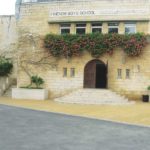
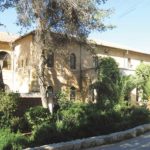
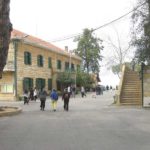
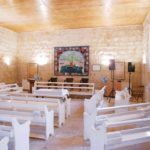
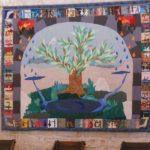

The era of tolerance in Andalus (Spain) was shorter than Ms. Rea suggests. It started shortly after the Muslim conquest in the eighth century and ended early in the twelfth century with the intolerant Almoravid Muslims conquering the tolerant Ummayid Muslims.
Religious toleration among the Kurds has been prevalent whenever their overlords have permitted it.
While the Palestinian state offered by Ehud Barak’s was far from ideal, it was the maximum that Israeli public opinion would accept. By responding with the “Second Intafada,” the Palestinians caused a seismic shift in Israeli politics. Israelis are convinced that the Palestinians will never accept peaceful coexistence with Israel. Netanyahu acts on this conviction. The only thing that could change this would be a general long-sustained Palestinian peace movement.